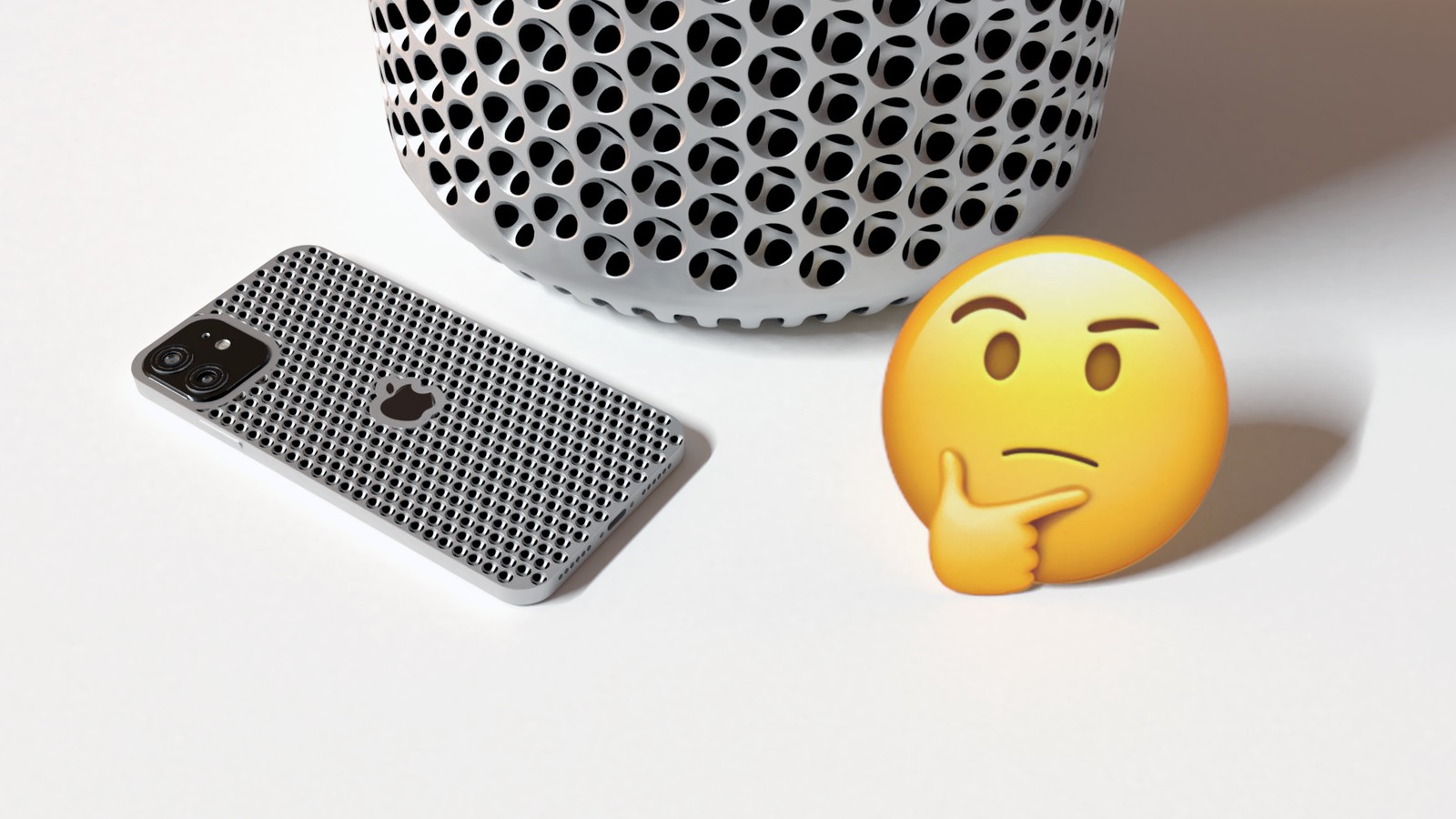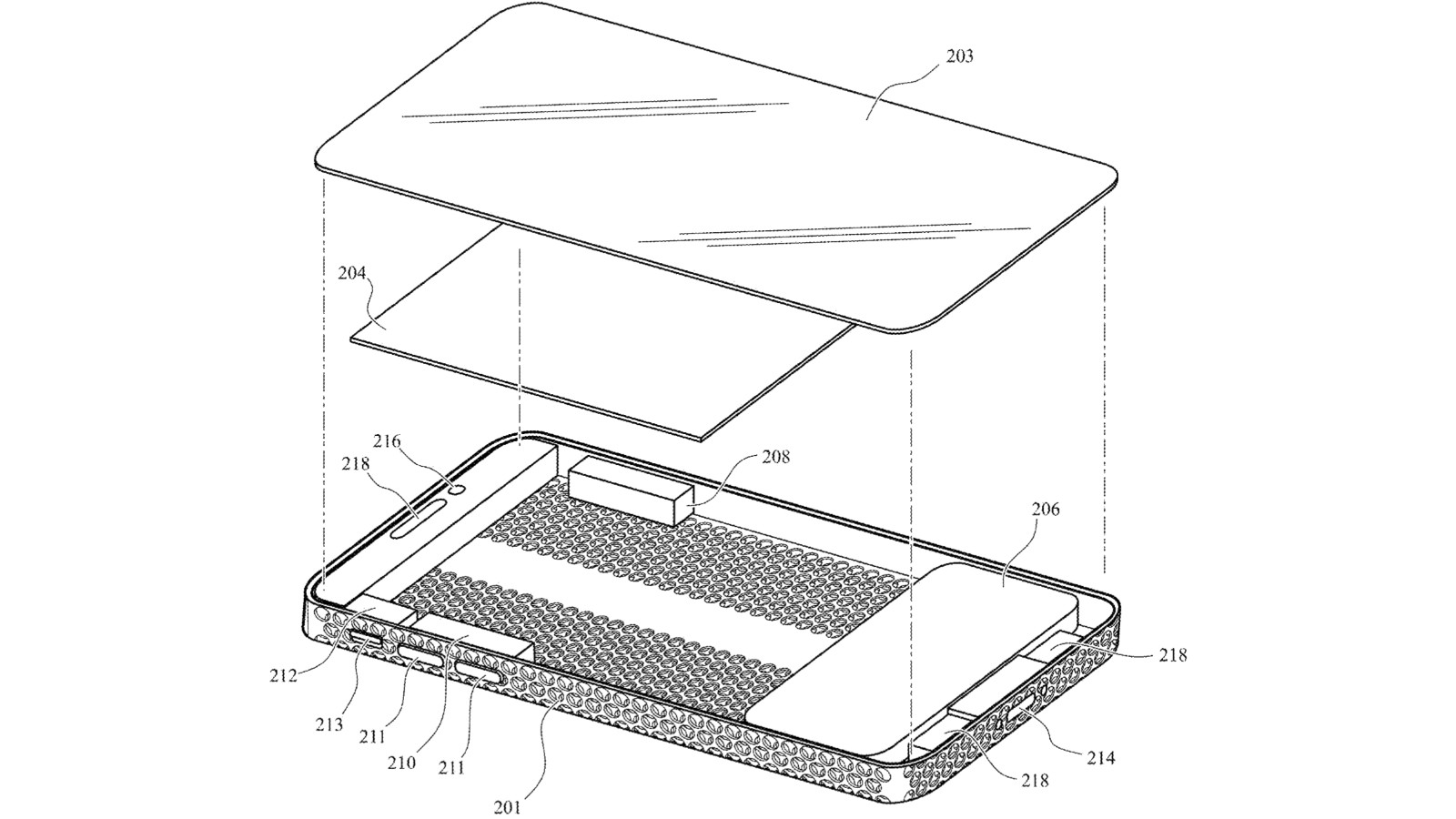The Cupertino giant has filed a patent on the Mac Pro-style “grater” design for other devices, including the iPhone.
According to a new patent application, Apple is looking to expand the Mac Pro 2019’s distinctive design to other devices, including the iPhone.
Apple introduced an innovative milled lattice on the Mac Pro and Pro Display XDR in 2019, which is created by working a spherical matrix into the inner and outer surfaces of the aluminum. The result is a lightweight lattice that maximizes airflow by creating an extremely rigid structure .
The new patent is titled “Housing construction” and covers the expansion of the lattice to other devices, such as the iPhone. The patent explains that “recent advances in electronic devices have enabled high levels of performance”, but many existing design solutions are unable to “effectively distribute or reject the heat generated by the electronic device into the surrounding environment”, thereby reducing way “the performance levels of such devices.”

Apple believes its lattice is a solution to this problem, thanks to better cooling and can conduct heat away from a component positioned substantially close to the case more effectively.
These advanced levels of heat removal, as described above, can result in significant performance gains for the electronic device and may allow for the use of components or operating levels that until now may not have been achievable with existing three-dimensional structures.
In improving cooling, devices with lattice could push their processors to higher temperatures for better performance. The illustrations included in the archive demonstrate how a miniaturized version of the lattice could be milled directly into the outer frame and back of the iPhone.

In addition to significantly improving thermals, this could also improve grip, “provide a unique and pleasant look” and give “a pleasant experience when handling the device”.
In some cases, a three-dimensional structure may include a relatively complex repetitive pattern which, in addition to improving heat removal capabilities and providing stiffness, provides the user with a visually interesting or aesthetically pleasing effect. Such a three-dimensional structure, for example when used as a housing, may also include a variety of colors on one or more regions of the housing to enhance the visual appearance and provide a pleasing aesthetic experience to the user.
Another advantage of the lattice model is the improved structural strength without increasing the thickness or weight of the components.
When used as a housing or other structural component of an electronic device, a three dimensional structure as described herein can provide a high level of strength and stiffness to weight ratio to the device. Traditional structures often achieve greater stiffness or strength by thickening or enlarging certain parts of the structure, often resulting in an increase in the weight and size of the electronic device, which may not be desirable for a user. The three-dimensional structures described herein may include, for example, a matrix of steps which serves to greatly improve the rigidity of the three-dimensional structure, without significantly increasing its size or weight. Therefore, a relatively light electronic device can be produced,
The patent also mentions how the lattice structure “can act as a shield for the electronic device, while still allowing airflow through it”, particularly as a shield against electromagnetic interference.
What do you think?



Recent Comments